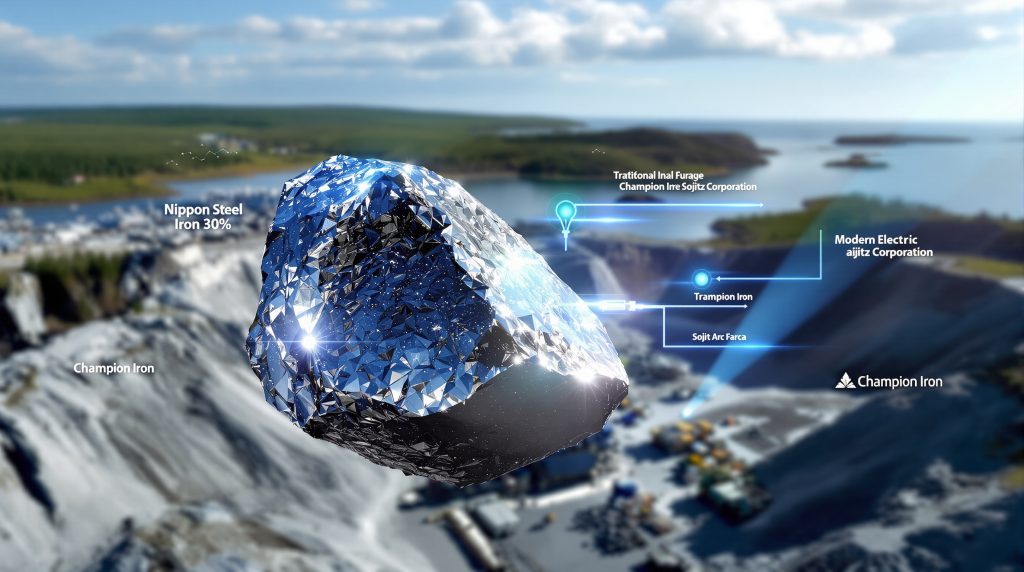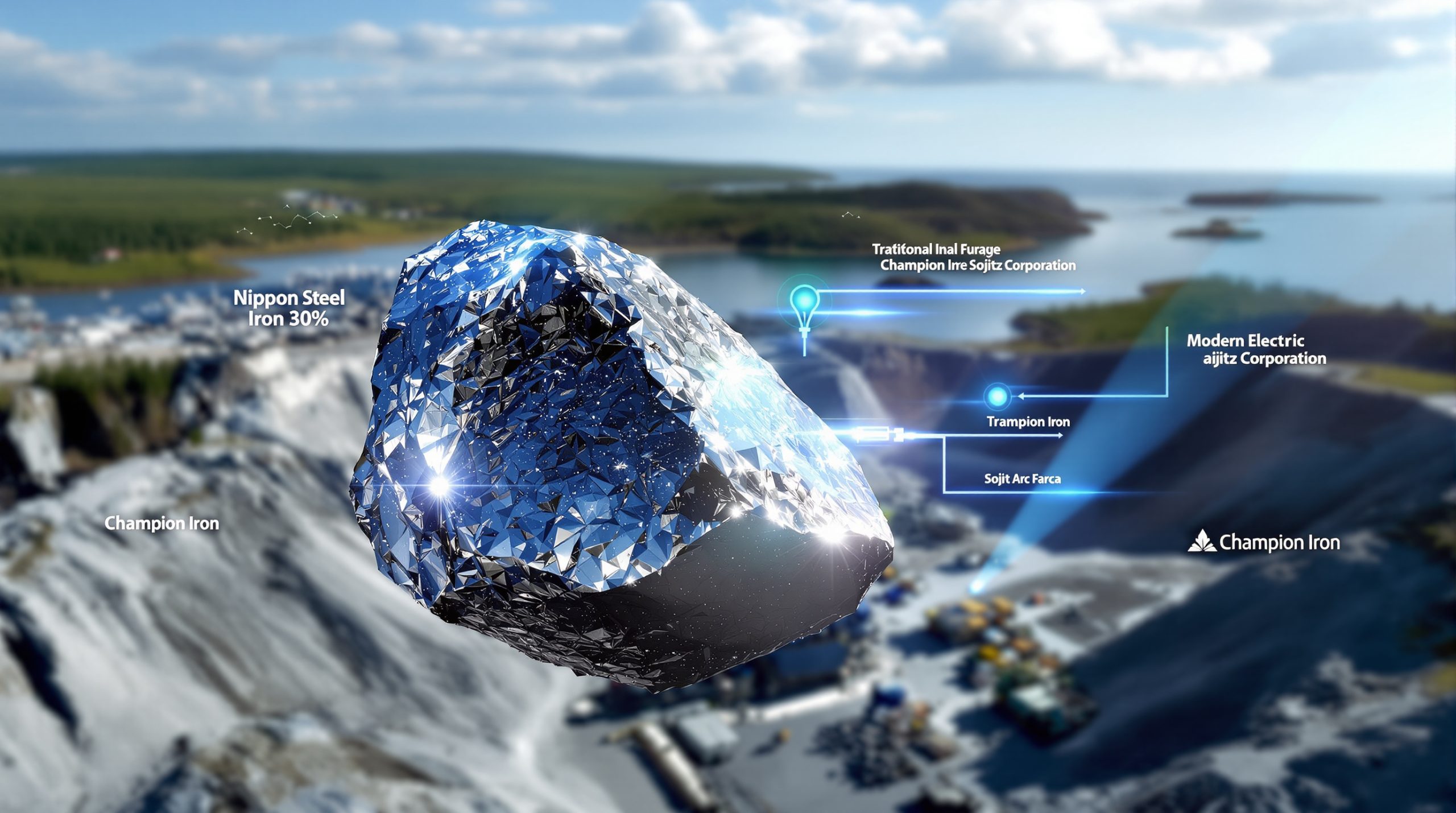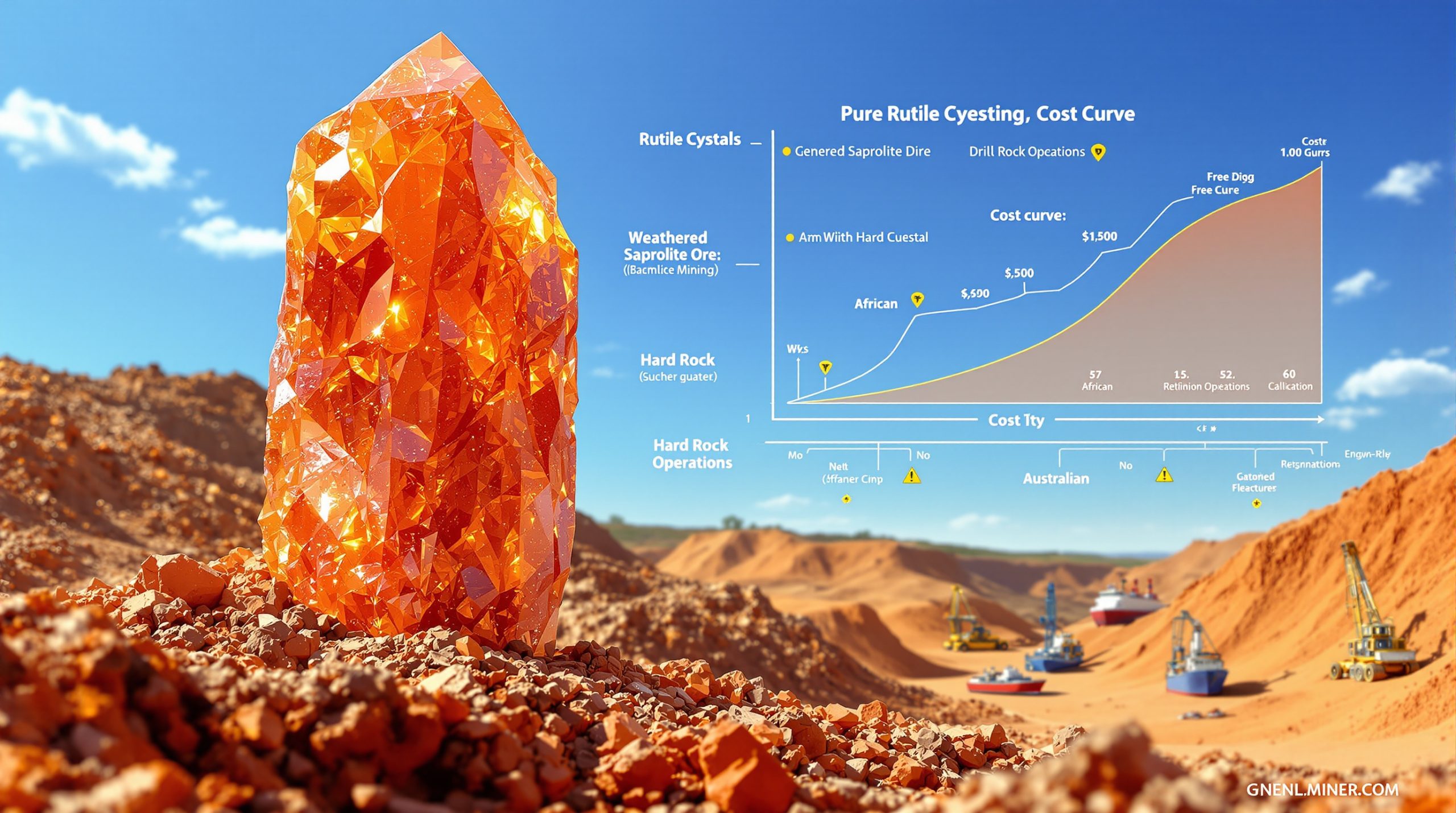Strategic Implications of Nippon Steel's Kami Iron Ore Acquisition
The global steel industry is witnessing a significant strategic move as Nippon Steel Corporation secures access to rare, high-value iron ore resources through its recent Canadian acquisition. This carefully structured deal represents not just a resource purchase, but a forward-looking positioning in an increasingly carbon-conscious steel market. Furthermore, this acquisition comes at a time when iron ore price trends show increasing volatility, making secure supply chains even more valuable.
What is the Kami Iron Ore Project and why is it significant?
The Kami Iron Ore Project, situated in the mineral-rich province of Newfoundland and Labrador, Canada, represents a strategic resource development opportunity that distinguishes itself through specialized production capabilities. The project's significance lies in its ability to produce high-grade direct reduced (DR) iron ore – a specialized resource specifically suited for direct reduced iron (DRI) production.
This distinction is critical as DR-grade iron ore represents only a small fraction of global iron ore market types. While standard iron ore is abundant globally, DR-grade ore with its superior purity levels is considerably scarcer, making deposits like Kami particularly valuable assets in the evolving steel industry landscape.
The project is currently progressing through feasibility studies toward development and operation, with its future production poised to play a role in the steel industry's transition toward greener manufacturing methods.
Technical specifications that drive value
DR-grade iron ore from deposits like Kami typically features iron content exceeding 67% – significantly higher than the 58-62% found in standard blast furnace grades. This higher iron concentration, combined with lower levels of impurities such as silica, phosphorus, and aluminum, makes it particularly suitable for modern, lower-emission steelmaking processes.
The technical advantages of this resource directly translate to economic value, as premium pricing for DR-grade ore has historically commanded 10-30% premiums over standard grades, depending on market conditions and exact specifications.
How does the partnership structure work?
The newly established Kami Iron Mine Partnership brings together three strategic players in a carefully structured joint venture:
- Nippon Steel Corporation: Japan's largest steelmaker enters through its wholly owned subsidiary, NS Canadian Resources, securing a 30% stake in the partnership
- Champion Iron (CI): The original project owner, maintaining significant control while bringing in strategic partners
- Sojitz Corporation: A major Japanese trading house with extensive experience in resource development and global trade
This trilateral partnership structure allows each entity to contribute specialized expertise while distributing project development risks. Nippon Steel gains access to critical raw materials, Champion Iron receives development capital while maintaining significant project ownership, and Sojitz leverages its trading and logistics expertise.
The formation of this partnership signals confidence in the project's potential while allowing resources and expertise to be shared across organizational boundaries. The structure represents a contemporary approach to resource development where complementary capabilities across the value chain are aligned through partnership rather than vertical integration.
What are the financial details of the acquisition?
The acquisition follows a staged investment approach that balances commitment with prudent risk management:
- Initial payment: C$42 million (approximately $30.2 million USD) already transferred to secure the partnership position
- Total agreed consideration: C$150 million for the 30% stake
- Contingent payment: The remaining C$108 million will be paid contingent upon favorable feasibility study results and a formal investment decision
This structured payment approach protects Nippon Steel from committing the full acquisition price before critical technical and economic parameters are confirmed. The arrangement demonstrates sophistication in resource acquisition strategy, where capital deployment is directly linked to project advancement milestones.
The total valuation implied by this transaction suggests Nippon Steel places significant strategic value on securing DR-grade ore access, as the valuation likely includes premiums above standard resource valuation metrics to reflect strategic importance.
Investment timeline considerations
While specific timelines for the feasibility study completion have not been publicly disclosed, typical feasibility studies for iron ore projects of this scale generally require 12-24 months. The contingent payment structure allows Nippon Steel to evaluate detailed technical data before committing the majority of the acquisition funds.
This payment structure also creates aligned incentives for all partners to advance the project efficiently while maintaining rigorous technical standards in the feasibility process.
Why is DR-grade iron ore particularly valuable?
The technological advantage of DR-grade ore
DR-grade iron ore occupies a premium position in the iron ore market hierarchy due to its superior characteristics:
- Higher purity levels: Typically containing over 67% iron content compared to standard ores at 58-62%
- Lower impurity profiles: Significantly reduced levels of silica, aluminum, phosphorus and other deleterious elements
- Process compatibility: Specifically suited for direct reduction processes that operate at lower temperatures
- End product quality: Enables production of premium steel grades with superior mechanical properties
These technical advantages translate directly to operational benefits in modern steelmaking facilities, allowing for more efficient energy usage, reduced carbon emissions, and higher-value end products.
Supply constraints in the global market
The global supply dynamics for DR-grade iron ore create a distinct market segment with fundamentally different economics from standard iron ore:
- Only approximately 5-7% of global iron ore production currently meets DR-grade specifications
- Limited number of deposits worldwide contain the geological characteristics needed to produce this grade
- Growing demand from electric arc furnace (EAF) steelmakers as they transition to greener production methods
- Increasing price premiums for DR-grade material as supply struggles to meet growing iron ore demand insights
These supply constraints position companies with secure access to DR-grade resources at a significant competitive advantage as the industry undergoes technological transition.
How does this acquisition align with Nippon Steel's decarbonization strategy?
Electric arc furnace implementation
Nippon Steel has publicly committed to constructing large electric arc furnaces as a cornerstone of its carbon emission reduction strategy. This represents a significant technological shift for a company historically centered around blast furnace operations.
The success of this transition depends heavily on consistent access to high-quality inputs:
- High-grade direct reduced iron (DRI) serves as the primary metallic input
- Quality steel scrap provides supplementary metallic units
- Consistency in raw material properties ensures stable operations and quality control
The Kami acquisition directly supports this strategic pivot by securing access to the specific raw material needed for DRI production, which will subsequently feed the planned electric arc furnaces. This aligns perfectly with the broader energy transition strategy being adopted across the metals sector.
Vertical integration benefits
By securing upstream raw material access, Nippon Steel gains multiple strategic advantages:
- Supply chain resilience: Reduced vulnerability to market disruptions and supply constraints
- Cost stability: Partial insulation from price volatility in premium iron ore grades
- Quality assurance: Direct influence over raw material specifications and consistency
- Carbon footprint management: Ability to control and optimize emissions across more of the value chain
- Market positioning: Enhanced ability to offer low-carbon steel products to environmentally conscious customers
This vertical integration approach mirrors strategies being adopted by several global steel leaders as they navigate the complex transition toward lower-carbon operations.
What broader industry trends does this acquisition reflect?
Securing critical raw materials
The global steel industry is experiencing a fundamental shift in resource strategy:
- Major producers increasingly view raw material security as a competitive necessity rather than just a cost consideration
- Companies are prioritizing long-term access to specialized inputs needed for technological transitions
- Investment in mining assets provides protection against supply disruptions and price volatility
- Regulatory pressures around carbon emissions are accelerating the need for specialized raw materials
Nippon Steel's acquisition represents a textbook example of this broader trend, with the company strategically investing to secure materials critical to its technological future, in line with the emerging critical minerals strategy being adopted by many industrialized nations.
International investment in Canadian resources
This acquisition also highlights Canada's growing importance in the global resource landscape:
- Political stability and reliable regulatory frameworks make Canada attractive for long-term capital investment
- High-quality resource deposits with favorable geological characteristics
- Strong environmental standards that align with corporate ESG objectives
- Strategic geographic position for exports to key markets
- Growing recognition of Canada's role in critical mineral supply chains
The investment in a Canadian project rather than alternatives in other regions suggests Nippon Steel values these attributes in its resource development strategy.
How does this fit into Nippon Steel's recent expansion strategy?
Global footprint expansion
The Kami acquisition follows Nippon Steel's recent significant strategic moves:
- $14.9 billion acquisition of US Steel: A transformative transaction completed in 2025 that dramatically expanded the company's North American presence
- Increasing investments in coking coal mines: Securing another critical steelmaking input
- Strategic positioning in resource-rich regions: Building a geographically diversified asset portfolio
- Focus on vertically integrated operations: Controlling more of the value chain
These moves collectively paint a picture of a company executing a carefully considered global expansion strategy that spans both production assets and raw material sources.
Building a resilient supply chain
These investments strengthen Nippon Steel's market position through enhanced supply chain control:
- Reduced dependency on volatile spot markets for critical inputs
- Diversified geographic sourcing reduces regional risk exposure
- Enhanced ability to meet specialized customer requirements
- Improved negotiating position with other suppliers
- Better insulation from market disruptions and trade policy changes
The Kami acquisition represents one component of this broader supply chain resilience strategy, focusing specifically on securing premium raw materials for next-generation production processes.
What challenges might the partnership face in developing the Kami project?
Feasibility study considerations
The project's advancement depends on several critical factors that will be evaluated in the ongoing feasibility study:
- Resource confirmation: Detailed drilling to verify grade distribution and continuity
- Infrastructure requirements: Transportation, power, and water needs for remote operations
- Environmental impacts: Assessment of potential issues and mitigation strategies
- Community relations: Engagement with local populations and indigenous groups
- Market forecasts: Long-term pricing and demand projections for specialized products
The contingent payment structure directly acknowledges these uncertainties, with the majority of the acquisition payment dependent on favorable resolution of these questions.
Development timeline factors
Even with positive feasibility results, several elements will influence the project's development schedule:
- Permitting processes: Regulatory approvals can take 12-24 months in Canadian jurisdictions
- Construction logistics: Building in remote locations presents unique challenges
- Skilled labor availability: Competition for specialized mining construction expertise
- Equipment procurement: Long lead times for specialized mining equipment
- Seasonal constraints: Northern climate limiting construction windows
Industry experience suggests a 3-5 year timeline from feasibility study completion to commercial production would be typical for a project of this nature and location.
How might this acquisition impact the global iron ore market?
Market supply implications
The development of the Kami project could influence market dynamics for premium iron ore:
- Additional DR-grade supply could help meet growing demand from expanding DRI capacity globally
- Price differentials between standard and premium grades may stabilize as supply increases
- Competitive positioning of other DR-grade producers could be affected
- Investment decisions for similar projects may accelerate if Kami demonstrates economic viability
While the project's production volume would represent only a small fraction of global iron ore supply, its impact on the specialized DR-grade segment could be more significant due to the limited number of producers in this category.
Shifting trade patterns
New production from Kami could affect established iron ore trade flows:
- North American steel producers may gain access to locally sourced DR-grade material
- Competition with Brazilian and Australian exporters in premium segments
- Potential shifts in shipping routes and freight markets
- Influence on regional price benchmarks for premium grades
These market impacts would gradually materialize as the project advances through development and into production over the coming years.
What does this mean for the future of steelmaking?
Accelerating the green transition
Securing DR-grade iron ore supplies supports broader industry decarbonization efforts:
- Facilitates faster deployment of DRI-EAF steelmaking routes with lower carbon footprints
- Reduces reliance on traditional blast furnace technology with inherently higher emissions
- Supports development of hydrogen-based reduction processes as next-generation technology
- Enables production of lower-carbon steel to meet emerging market demands
Nippon Steel's investment signals confidence that these technological transitions will continue to gain momentum, creating sustained demand for specialized raw materials.
Competitive positioning
Companies with secured access to premium raw materials will gain strategic advantages:
- Ability to meet increasingly stringent customer specifications for low-carbon products
- Lower compliance costs under carbon pricing schemes being implemented globally
- Marketing advantages for green steel products with verified emissions reductions
- Potential price premiums for lower-carbon products in environmentally conscious markets
This positioning becomes particularly valuable as regulatory pressures and market demands for lower-carbon products continue to intensify across global markets.
What's next for the Kami project development?
Near-term milestones
The project will likely progress through several key phases in the coming years:
- Completion of comprehensive feasibility studies with detailed technical and economic analysis
- Environmental assessments and regulatory approvals
- Final investment decision by the partnership based on feasibility outcomes
- Engineering and procurement planning for major equipment
- Site preparation and initial construction activities
The timing of these milestones will be influenced by both technical factors and market conditions, with the feasibility study results representing the critical decision point for project advancement.
Production timeline expectations
Based on comparable iron ore development projects in Canada, the likely timeline includes:
- 12-24 months for feasibility completion and regulatory approvals
- 24-36 months for construction and commissioning
- Gradual ramp-up to full production capacity over 6-12 months
- Potential for phased expansion based on market performance
This suggests commercial production could potentially begin in the 2028-2030 timeframe, assuming positive feasibility results and timely investment decisions.
Future Industry Implications
This acquisition represents more than just a single resource transaction – it signals a fundamental shift in how major steel producers are positioning for a carbon-constrained future. As environmental regulations tighten globally and customer demands for lower-carbon products increase, control of specialized raw materials becomes a strategic imperative rather than simply a cost consideration.
The Nippon Steel-Champion Iron-Sojitz partnership demonstrates how cross-border collaboration can address these challenges while distributing development risks and leveraging complementary expertise. Similar partnership models may become increasingly common as the industry navigates the complex transition toward more sustainable operations.
Disclaimer: This article contains forward-looking statements and analysis regarding resource development, market trends, and corporate strategies. Actual outcomes may differ materially from these projections due to technical, regulatory, market, or other factors beyond the control of the companies involved. Readers should conduct their own due diligence before making investment or business decisions based on this information.
Want to Stay Ahead of Major Mineral Discoveries?
Discover why significant mineral discoveries like the Kami Iron Ore Project can lead to substantial market returns by exploring Discovery Alert's dedicated discoveries page, powered by the proprietary Discovery IQ model. Begin your 30-day free trial today at Discovery Alert to receive instant notifications on significant ASX mineral discoveries and position yourself ahead of the market.




